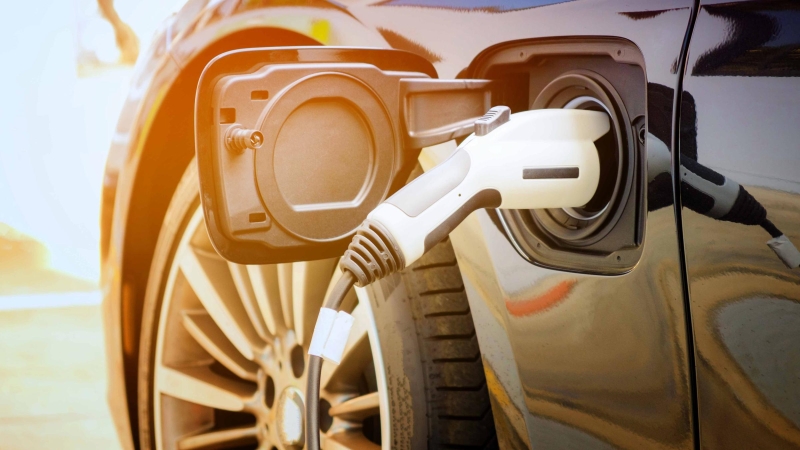
Building Regs and Compliance – latest updates and how they affect design
Posted on 15/06/22

With innovation comes legislative change – but often change doesn’t keep pace with innovation’s rapid pace. A good example of this is with the internet, where legislation often lags behind the development and popularity of online content. The construction industry also has to address ongoing innovation, when new materials or government legislation affect how buildings are made and how they interact with their environments.
Future design
In 2022, several important changes have arrived that will impact new and existing homes – and how they are designed in the future. One of the hottest topics at the moment is the environment and the impact housing has on the world around us.
About 40% of total UK energy use is from heating and powering buildings. The aim of government legislation is to reduce this, so that from 15 June 2022 all new homes must produce 30% less carbon dioxide emissions than they currently do. Also covered are new rules to reduce energy use and carbon emissions during home improvement projects and renovations, and also the inclusion of charging points in new homes. New projects being initiated now will be affected immediately, but certain cases already underway will be governed by the prior rules.
Conservation areas
The most significant changes are to Part L of the building regulations, which covers the ‘Conservation of Fuel and Power’. It affects new construction projects and some refurbs. Part L defines the parameters of current and future energy performance and carbon emissions. For the UK, this means a target of net zero greenhouse gas emissions by 2050. The aim of these changes is to deliver low-carbon producing and energy-efficient housing going forward.
Changes to Part L includes updated insulation requirements for new homes, which will now be assessed under a new Standard Assessment Procedure (SAP) calculation called SAP10. Self-builders will also have to conduct onsite audits that will confirm the design details in their plans are exactly what has been constructed, with photographic evidence. U-values – the heat generated and transferred outwards by structures – have also been increased. Regarding U-values in existing dwellings, minimum efficiency standards will mean more stringent regulation of replacement windows and doors too.
The new rules also discourage forms of thermal bridging, so it’s preferred that there’s no direct connection between inside and outside layers of the building. There are new rules for the area of glazing included in extensions, improved lighting design and new low-flow temperature requirements for heating systems. The maximum flow temperatures in a central heating system will now be 55°C, where previously it stood at over 75°C.
New additions
There have also been changes made to Part F (Ventilation), and two new Building Regulations, Part O (Overheating) and Part S (Electric Vehicle Charging). The latter is an innovation that is really beginning to take off in the UK, as more and more car owners opt for the more environmentally-friendly electric and hybrid models.
The amendments to Part F are intended to simplify the impact of ventilation in a home for self-builders and renovators. When people renovate and extend existing properties, with one or two storey extensions, or conservatories for example, the energy efficiency work carried out must not worsen the ventilation of the property. There’s also new thinking on replacement windows, which must feature ‘trickle ventilation’ unless there’s an alternative form of ventilation, or the new work doesn’t result in the existing ventilation being compromised.
Part O (Overheating) is to limit excessive solar gain in new and existing homes – via large panels of glazing, for example – and also to remove excess heat. This affects the building’s design process a great deal and here at NWD we have to be mindful of the extent to which we deploy glazing, for instance, into our concepts.
The thinking behind Part S (Electric Vehicle Charging) is to make sure that homes in the future take into consideration charging points for electric vehicles, to facilitate/encourage take up of electric vehicles.
If you have a project you would like to discuss with us, then please get in touch to find out how we can help.
Latest posts
Join us at the Passivhaus Open days November 2023.
 30/10/23
30/10/23Whilst a little late in the day we're delighted to announce that we'll be partaking in the Passivhaus...
Read more...
EnerPHit Blog Article 10: Installation of the MVHR System.
 21/08/23
21/08/23One of the five core principles of Passivhaus is mechanical ventilation and heat recovery (MVHR). This...
Read more...
Completion of Small Animal Hospital at Birstall
 06/07/23
06/07/23The Brief.NWD Architects were approached to support the major extension of the existing Vets4Pets surgery...
Read more...
Introducing the Future of Pet Retail: Pets at Home Unveils Innovative Store in Spalding
 23/06/23
23/06/23Spalding pet enthusiasts have something exciting to wag their tails about as Pets at Home, the UK's...
Read more...
NWD Architects Ltd are recruiting.
 15/06/23
15/06/23POSITION - JUNIOR CAD TECHNICIAN NWD Architects Ltd NWD are looking to appoint a Junior CAD...
Read more...

